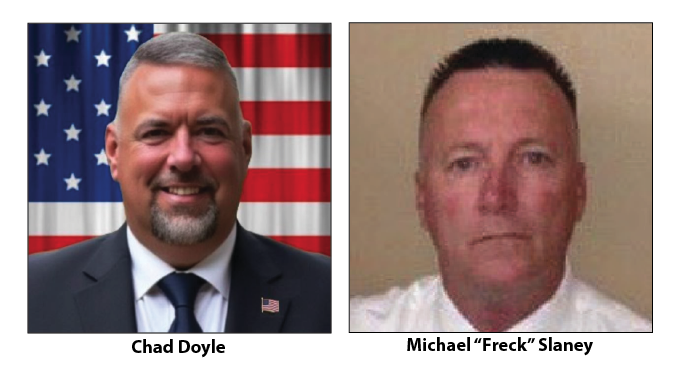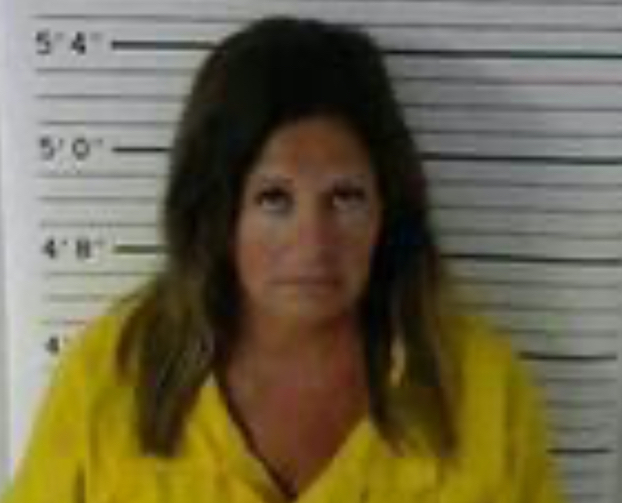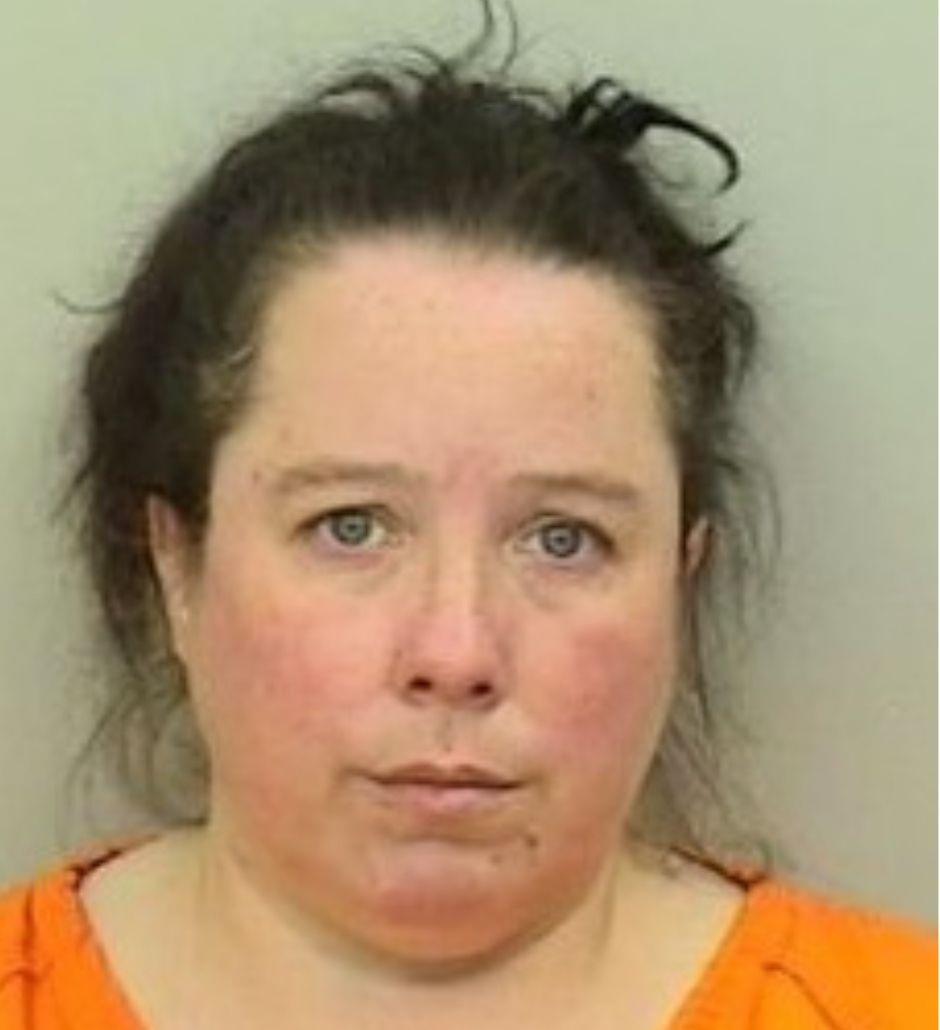A chateau, a broken wrist and a bottle of wine
Published 6:18 pm Friday, August 18, 2017
Thomas Jefferson would have been a good friend
Mary Richardson / Special to American Press
Thomas Jefferson and I would have been such good friends. The signs are there, right up in the stars. We were born only 10 days apart (albeit in different centuries). He is an Aries and I am a Taurus — so, of course, we “represent the two necessary halves of the same relationship coin” according to Google.
Trending
There were non-celestial signs, too.
He was the principal author of the Declaration of Independence, second vice president of the United States and our third president. OK, so none of that applies to me. But consider this: Thomas Jefferson broke his wrist, and so did I! His recuperation consisted of heading down to Aix-en-Provence in France to take the waters, whereas I went to the emergency room at Lake Area Medical Center. Essentially the same thing.
We are both secondgeneration Americans. His parents were of English and Scottish and maybe some other country descent. My family came from England, Germany and Norway. But it was all called Christendom at the time, and borders were so transient at the time. Our ancestors could have been neighbors!
Trending
Also, he had a wife named Martha. I had a grandmother named Martha.
He bought Louisiana. I live in Louisiana.
I know, it’s uncanny.
CURIOUS MINDS THINK ALIKE
So it was inevitable that we would be both curious about wine from the Burgundy region of France. Naturally, we both took a trip to Burgundy to explore the region. There was no question but that we would walk the same trails, taste the same type of grapes, and meet the same wine making families.
That is exactly what happened.
My first inkling about how much I had in common with Thomas Jefferson occurred on the plane ride from Lake Charles to France. My reading material was a book entitled “Thomas Jefferson on Wine” by John Hailman.
I read with interest all the places he had been in France while searching for the best wines for his wine cellars. It dawned on me that the places he had visited were the same places we would be heading towards as soon as the plane landed. Jefferson went to the Cote de Beaune region of Burgundy which includes the villages of Beaune, Meursault, Volnay, and Pommard. Two great minds following the same path, I though immodestly.
BROKEN WRIST
Jefferson’s trip took place in 1787. He was living in Paris at the time and had just broken his wrist. The pain was keeping him awake all night. It was swollen, and he couldn’t use it at all (I know, Thomas, I know! I couldn’t even turn the key in my car. Oh right, you had a horse. Well, I couldn’t even cut a piece of meat!)
He began writing letters with his left hand (I know! That is so inconvenient.)
He never played the violin again. Neither have I. (Yes, I know I didn’t play before, but that’s not the point.)
Jefferson wrote to James Madison and said that he needed to visit the mineral waters at Aix-en-Provence to take the cure for his aching, swollen, weak wrist. He also wanted to visit the vineyards and cellars of Burgundy in order to “view and obtain plans of classical architecture as models for American public buildings,” according to Hailman. To which his daughter said in a letter, “I am inclined to think that your voyage is rather for your pleasure than for your health,” adding what would be translated today as “just saying.”
WALKING IN JEffERSON’S FOOTSTEPS
Jefferson started his journey in his usual manner — a stagecoach drawn by three horses. He went from posthouse (way-stations along the road) to posthouse, averaging about 10 miles a day. We averaged 10 miles a day, too! Of course, we were hiking, so 10 miles felt like quite a bit, but his coach wasn’t all that comfortable either. And I’m sure that, just like ours, his feet hurt at the end of the day. After all, different shoes for the left and right feet hadn’t been invented yet.
We thought we were probably following the old stagecoach roads he traversed as we walked up and down hills from one village to the next. There were signs. Like the signpost that read “Meursault” right as we entered the village of Meursault.
Therefore we knew for sure that we were in the vicinity of one of Jefferson’s favorite table wines — the Goutte d’Or. This wine was cheap, Jefferson said, because wine lovers hadn’t discovered Meursault, and Jefferson was usually a thrifty man. (Today this wine is imported by Louis Latour and others, so we can still buy it. But it costs around $100 per bottle!)
We were still in Meursault when we found absolute proof that we were walking in Thomas Jefferson’s footsteps. We had just completed a tour of the lovely Chateau de Meursault, a site where wine has been produced since the 11th century. We had ascended from a 12th century cellar and were tasting wines when the guide threw out, “Thomas Jefferson’s signature is still in our guest book.” He was here! Great minds following the same path — and drinking the same wine!
As we walked through the vineyards I tried to see them through Jefferson’s eyes. I thought the basic scene was probably much the same — vineyards enclosed by stone walls, rows of grapevines situated so as to catch the maximum amount of sunshine, and stately chateaus.
Wine has been made in this area since the 6th century (I won’t insult your memory by reminding you that this was the time of the colonization of Southern Gaul by Green Gaul — obviously a discerning wine lover.). But events transpired.
At the time Jefferson was rocking along the roads in his stagecoach, most of the vineyards were owned by the nobility and the Catholic church (and those monks were making some fantastic wines). But immediately after Jefferson left France, the French Revolution occurred. Heads rolled. The Church pulled out and the aristocracy that still had their heads sold their lands as fast as they could. Then the inheritance laws were changed so that property had to be split evenly among heirs (it’s the same in Louisiana — another similarity with Jefferson). Plots in Burgundy kept getting smaller and smaller. Today some vineyards consist of only a couple rows of grapes in a much larger field.
But all this didn’t seem to matter. The sun was shining, making the vines glisten and the châteaux turn a particular shade of gold. I think he was seeing what we saw.
EXPENSIVE WINE
Many of our hiking trails paralleled the present-day Route des Grands Crus. Suddenly we realized we had hiked onto the land of “Le Montrachet” — Jefferson’s absolute favorite wine. According to Jefferson’s notes, the Montrachet vineyard produced 30,000 bottles a year from about 50 acres. Every bottle was expensive. But Jefferson wanted it so badly he didn’t care. He complained, pointing out that Montrachet was three times the cost of his favorite Meursault wine, but he paid.
Today, post Revolution, that domaine consists of less than 20 acres and produces only 15,000 bottles a year. It is still horribly pricey — at about $2,100 a bottle it is one of the most expensive dry white wines in the world. The rest of the original vineyard, plus selected nearby vineyards, still use the name “Montrachet” but hyphens have been added — Chevalier-Montrachet, Batard-Montrachet, Chassagne-Montrachet, Puligny-Montrachet and more. Hyphens mean lower prices. Joe sat down on a bench that had thoughtfully been provided by the domaine of Bienvenues-Batard-Montrachet, probably just for hikers like us.
“Hmmm,” he said. “Three hypens. I wonder if we could drop in and buy a bottle.”
I looked up the price of their wine on my iPhone – $277.
“A case?” he asked hopefully. “No, a bottle,” I answered.
I was feeling distant from Thomas Jefferson. Who would pay prices like that? He should not have done it; I know he was using his own salary but the country was broke at the time.
That night I read some of his letters reprinted in Hailman’s book. Aha! He had come to his senses. Yes, he paid “two livres eight sous” (that doesn’t sound like too much, right?) for a bottle of of Le Montrachet. But a few months later, after his return to Paris, he placed an order for wines and this time he only bought Meursault wine, adding that he would skip the high-priced Montrachet. I forgave him. (Later, he gave in to temptation and bought more Montrachet, but I still forgave him.)
We ended our hike in the village of Pommard, where we had rented an apartment through Airbnb.
The place turned out to be saturated with reminders of Thomas Jefferson. We had three close encounters: we found another of his favorite vineyards, we found a plaque dedicated to him, and, most importantly, we met a winemaker with direct (OK, indirect) ties to Jefferson.
The chateau came first. We had read about a beautiful 12th century chateau and vineyard enclosed by stone walls named Clos de la Commaraine. The historian James M. Gabler said the chateau was one of the oldest homes in France, having been built in 1112. Jefferson wrote that he loved the domaine’s pinot noir, writing about how the taste lingered on his palate. And it was cheap! He ordered all he could while in Paris. When he returned to the United States, he continued to order it — especially liking the fact that it cost only “21 sous” per bottle (remember, the Montrachet cost two livres eight sous, and there were 20 sous to a livre).
IN SEARCH OF CHATEAU
We had to find this place. We studied our maps and concluded that we had walked right by it on our way into the village. We went back, peered over a stone wall, and there was the loveliest chateau we had seen in all of France. Vines in shades of deep cherry, pink, chartreuse and green climbed its walls and trembled in the wind. How could the wine not be delicious since it was made midst all this beauty? No wonder Thomas Jefferson fell in love with it.
Today the chateau is a private home. The wine made from the pinot noir grapes in the vineyard is a Premier Cru. Some of it is exported to the United States by Louis Jadot. But the price is more than 21 sous.
Next, we went looking for the plaque honoring Jefferson. We were told to go down a narrow street to find the entrance to a park. And there it was. Jefferson, “A Lover of France” was being extolled for sharing the French love of liberty. “With his friend Lafayette, he plays a key role in … the declaration of the rights of man and citizens in 1783,” it stated. The bottom line read “Les ponts du coeur, 1789-2009” — “a bridge of hearts.”
As we were reading, I heard young voices. Two straight lines of French school children were coming toward us. They stopped at the plaque to wait for their teachers and one of the students (could her name be Madeline?) smiled shyly at me. In that second I felt like she and I had formed our own bridge of hearts.
But Jefferson came closest to us when we met a winemaker, Olivier Cyrot. The story goes back a couple centuries. Early on in Jefferson’s trip to Burgundy, he had met a man who became increasingly important to him, Monsieur Etienne Parent. Parent gave him advice about Burgundy wines. He bought all of Jefferson’s wine for him while he lived to Paris, and even continued to serve in that capacity after Jefferson returned to the United States. The bond between the men was so strong that when the Revolution was immenent, Parent asked Jefferson to take his eldest son to the United States to live with him. Circumstances prevented that from happening, but it was not due to lack of will. Today, the descendants of Etienne Parent live in Pommard and have been winemakers for 12 generations.
At a wine tasting in the cellar of our Airbnb hosts, Olivier and Fabienne Cyrot, the story of the Parent family became much more personal. Olivier is now the 4th generation owner and winemaker for the Cyrot-Buthiau Domaine, and his story is entwined with the Parent family. Olivier should have learned the wine making trade from his father, but his father died unexpectedly when Olivier was 13. The domaine was in danger of floundering. Then a family with a long tradition of wine making — Yes! The Parent Domaine — took young Olivier under its wing. Jacques Parent, direct descendant of Etienne Parent, gave Olivier the knowledge his father would have imparted, had he lived. Olivier has since become an award-winning winemaker, owner and propriétaire récoltant (grower of grapes) of an esteemed domaine.
So, here we were, tasting wines that would never have been created if it hadn’t been for Etienne Parent’s family, and thinking about Thomas Jefferson and the friendship that flourished because of these Burgundy wines.
Surely Thomas Jefferson would have been pleased to be sitting next to us. Surely he would have swirled Olivier’s wine in his glass and said, “Yes, this is very good. Please send me your entire production next year. I need it for my cellar in Monticello. I want to share it with the new world.”
Jefferson eventually made it to Aix-en-Provence — where the water did not cure his broken wrist (evidently not being up to the standards of the Lake Area Medical Center) — and then continued to explore the wine regions of the Rhine, the Mosel, and the champagne region of France.
But we did not follow him. I said goodbye to him in Pommard. He had to get back to the new country and help form a government. I had to return to Lake Charles and feed my dogs.
But I felt we had shared a great deal.
The stars had aligned. I found a friend.
*This story first appeared in the American Press on November 13, 2016.
Every wine making family has a wine cellar similar to this one. Some date back to the 12th century but most were built in the 18th century. Thomas Jefferson probably tasted wines in a cellar like this one on his trip to Burgundy in 1787. (Mary Richardson/Special to the American Press)
Joe Richardson rests from hiking on a bench in the exclusive Bienvenue-Batard-Montrachet Grand Cru vineyard. In Thomas Jefferson’s day and now, some of the most expensive white wines in the world are made from the vineyards in this area. (Mary Richardson/Special to the American Press)





